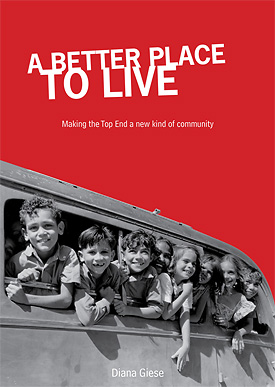
A better place to live
Diana Giese
Freshwater Bay Press, 2009
Read further extracts in Google Books, http://books.google.com.au/books?id=DPBIn4_SCbAC&source=gbs_navlinks_s
under A better place to live: making the Top End a new kind of community
Read reviews below the pictures
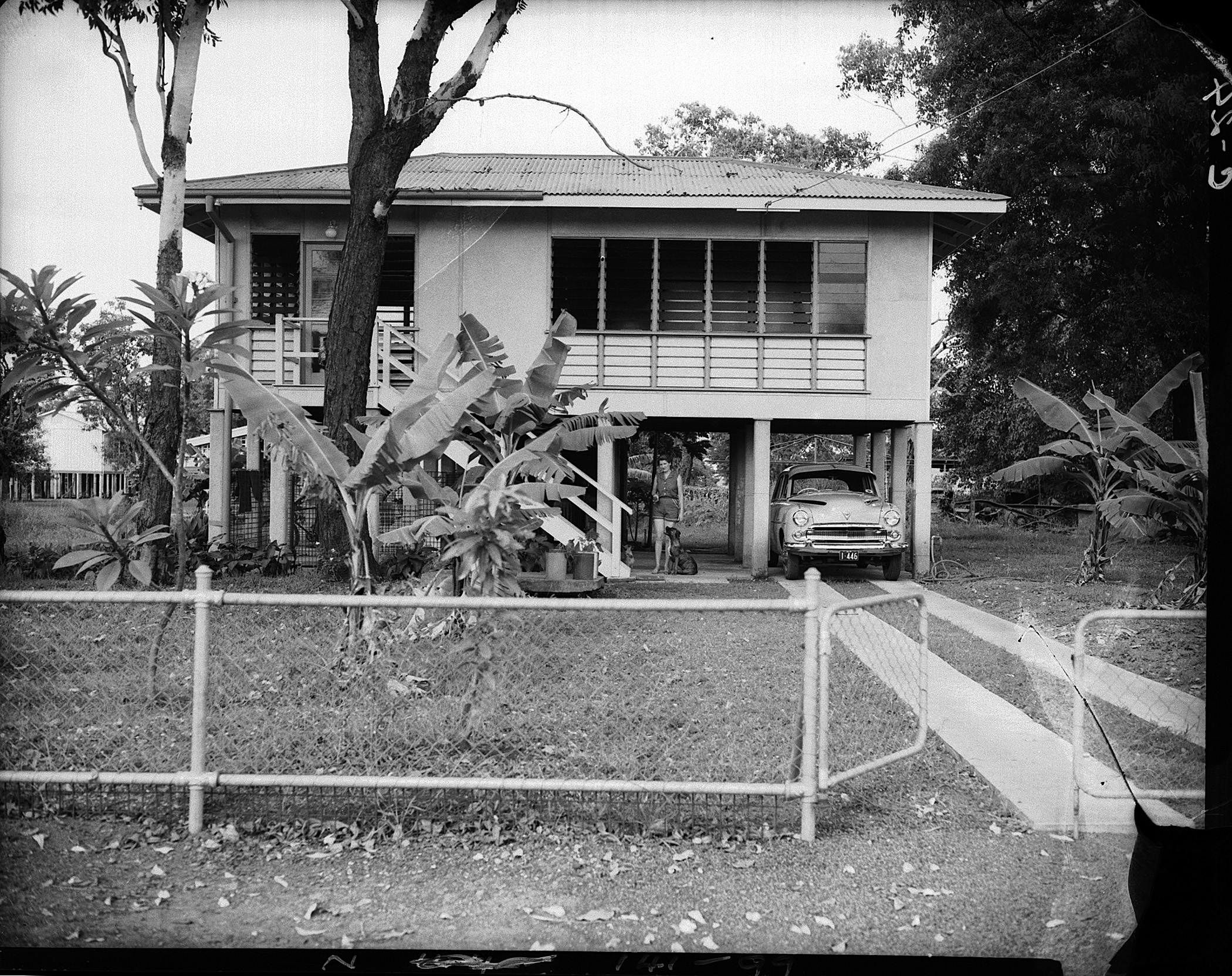
A typical raised Darwin house from the 1950s
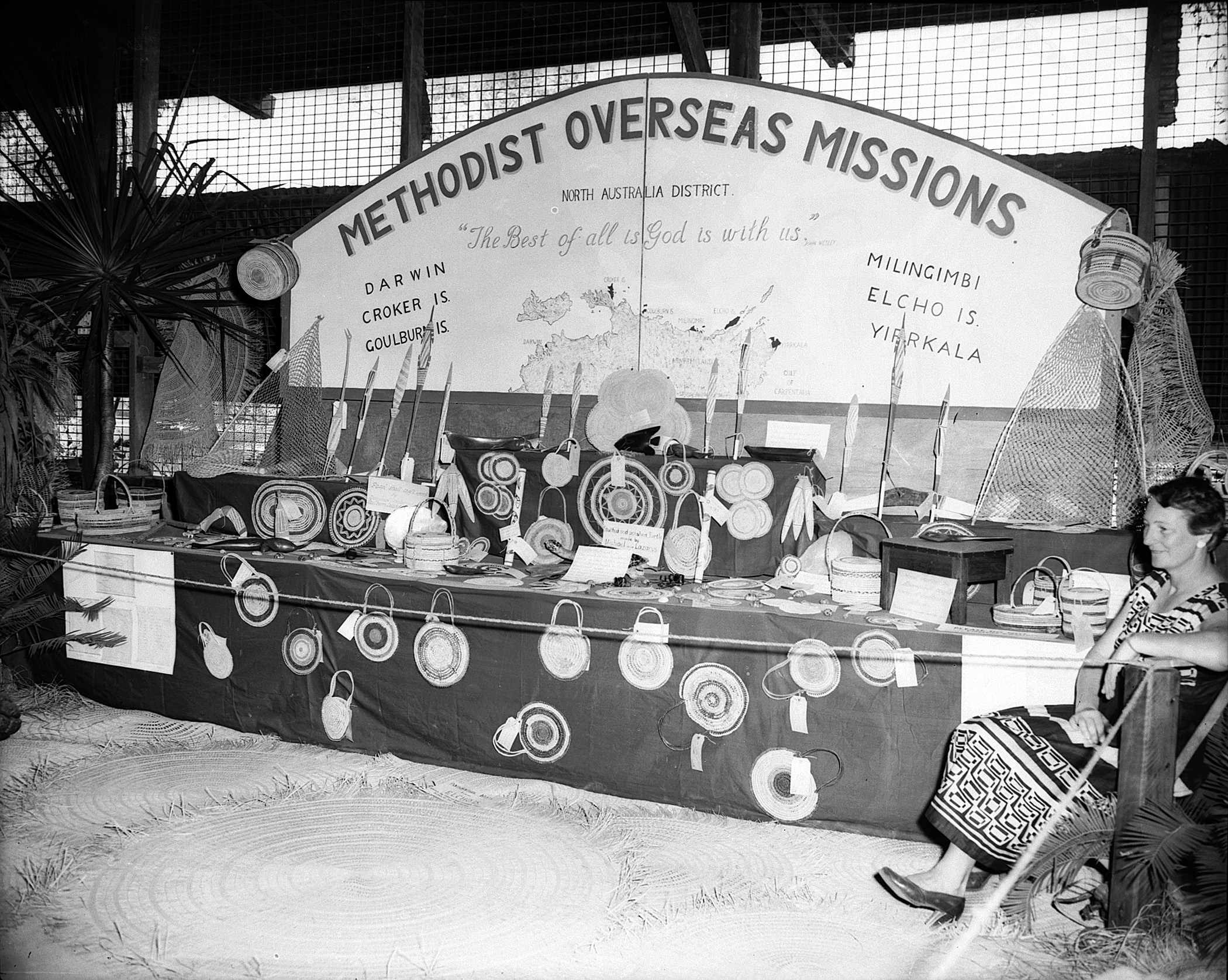
Methodist Overseas Mission display of Aboriginal crafts, Darwin Show, 1956
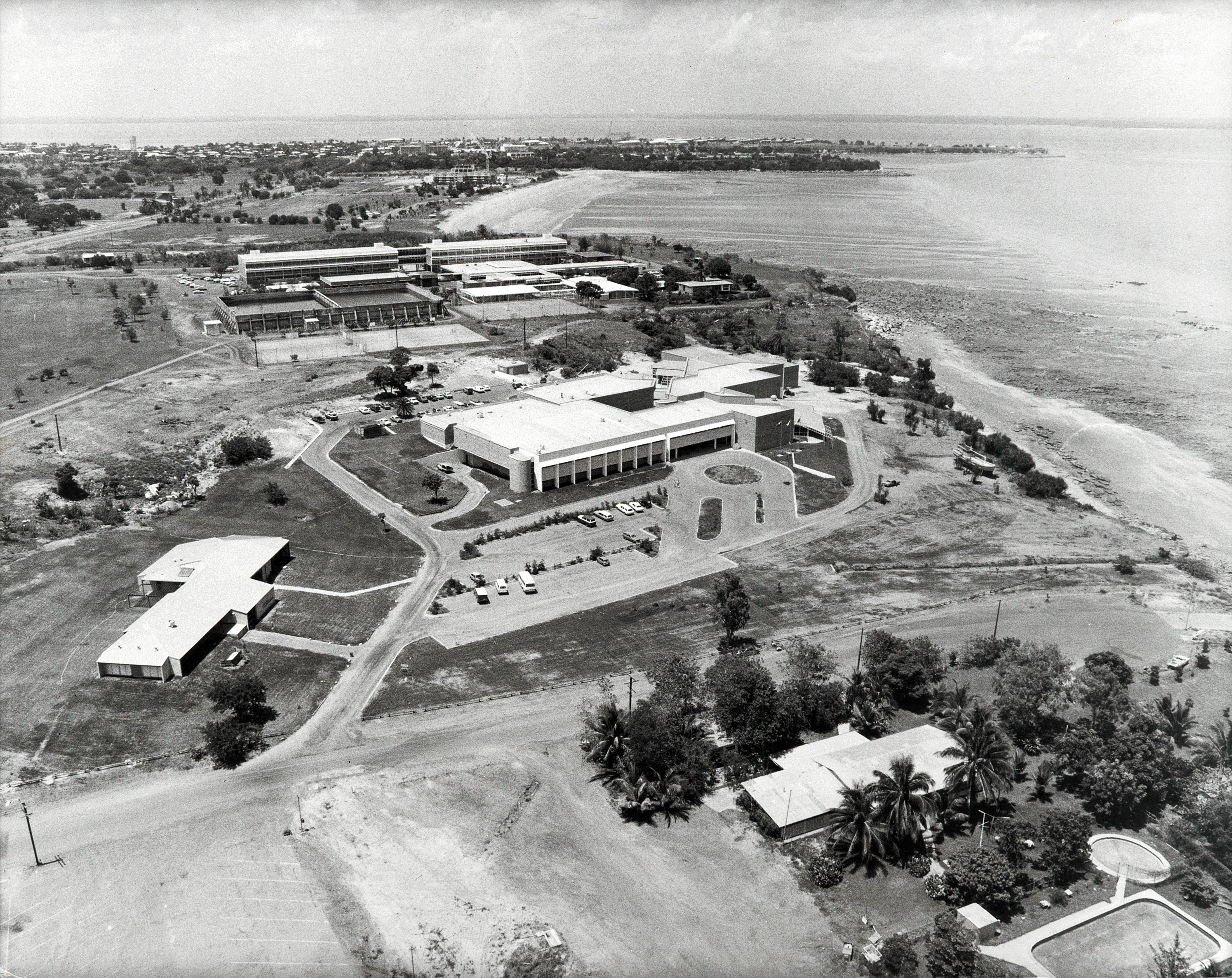
Aerial view of the Museum and Art Gallery of the Northern Territory, with Darwin High School behind it, 1980s. It was the first major building constructed during Paul Everingham’s first period as Chief Minister
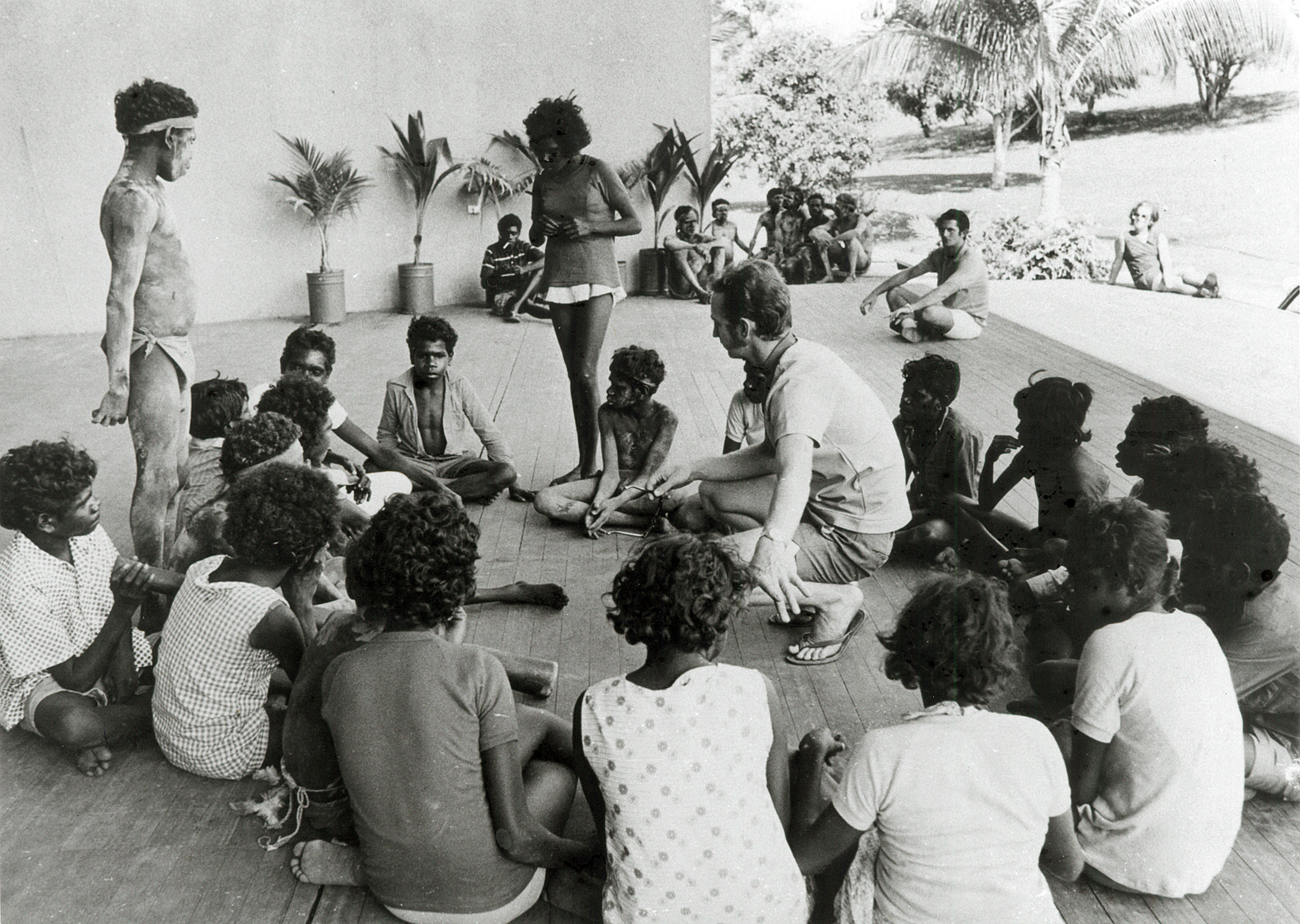
North Australian Eisteddfod competitors prepare to go onstage, 1960s
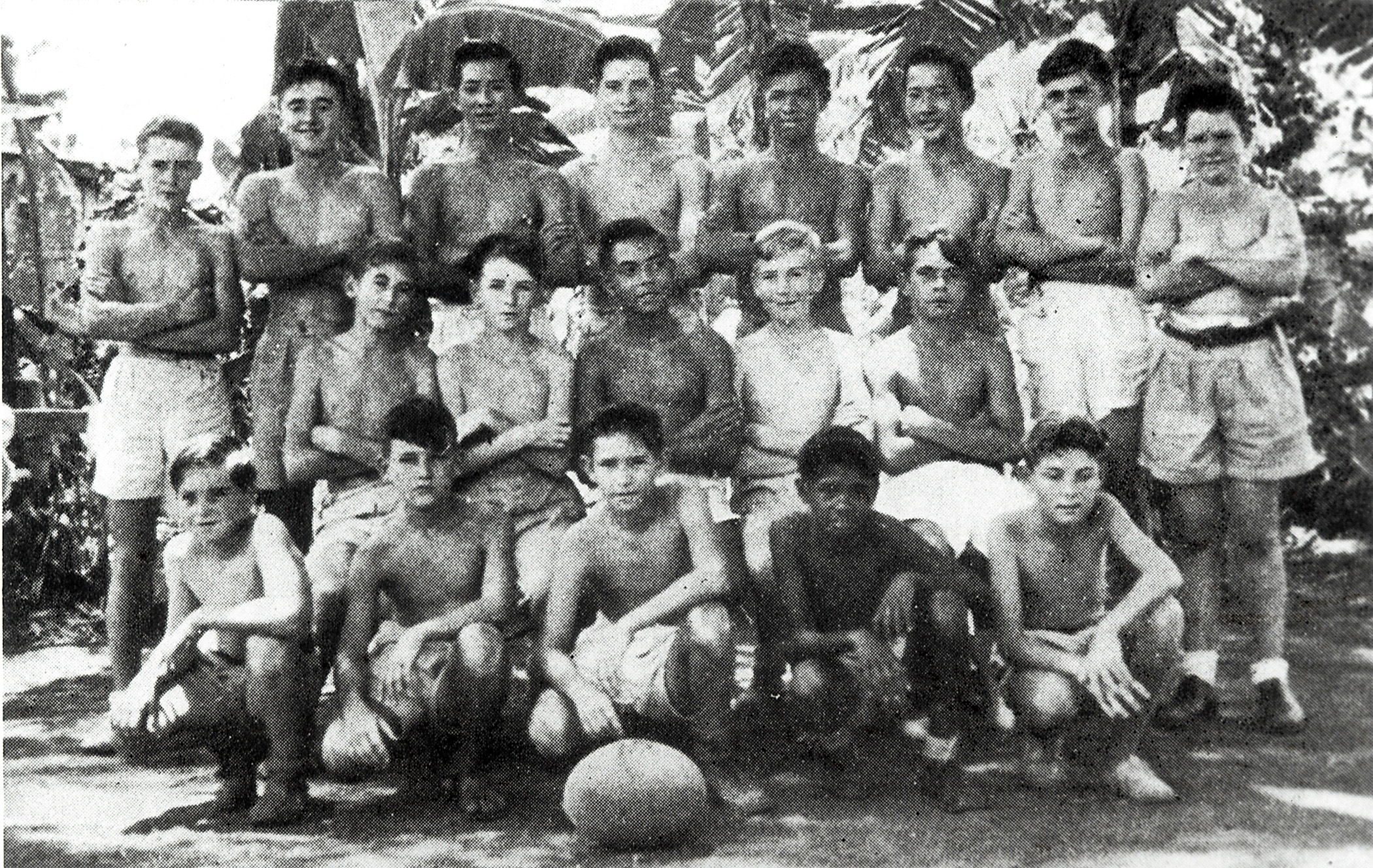
Darwin High School football team, premiers in their division, 1950s
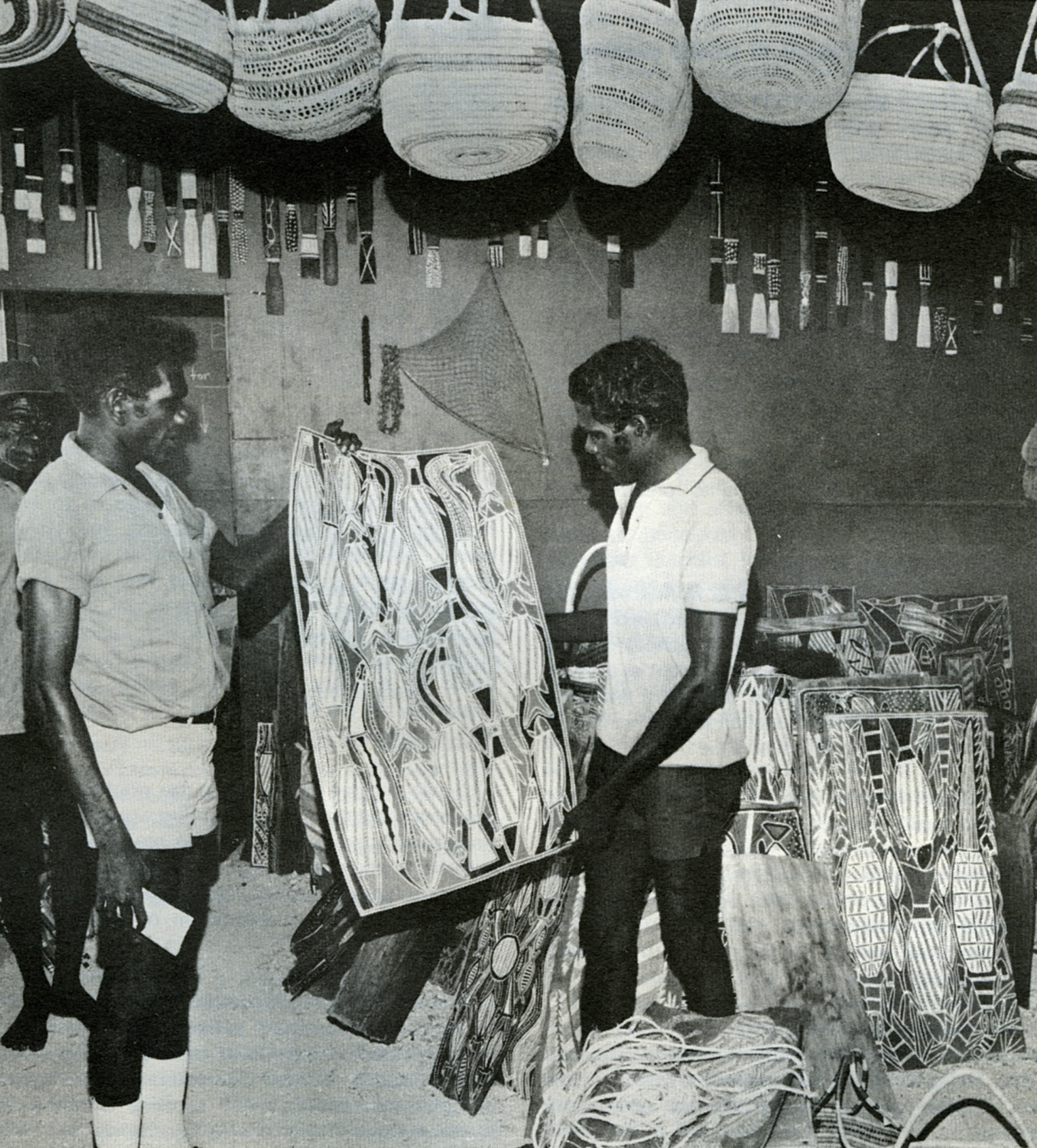
Maningrida Arts and Crafts Centre, 1968
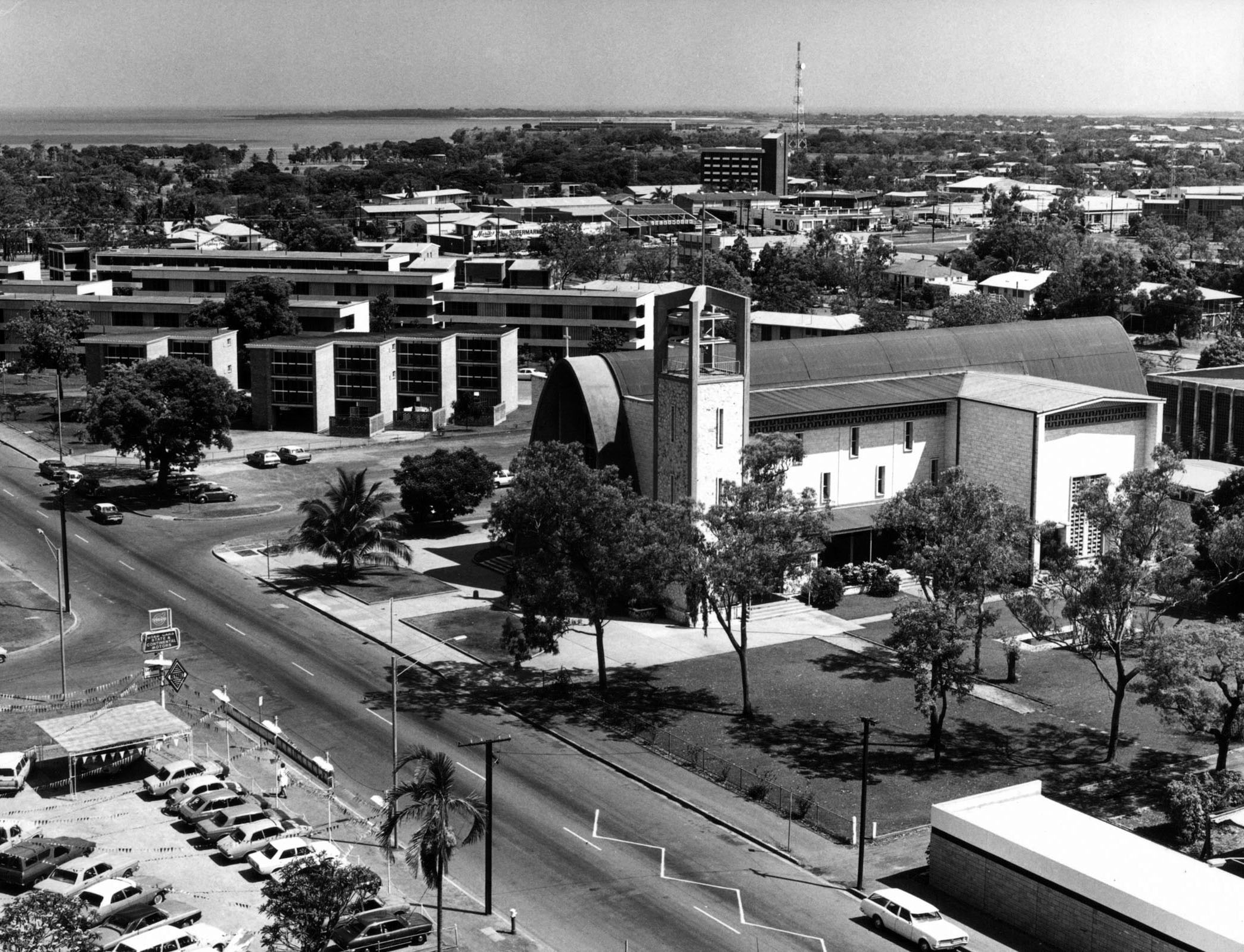
Darwin in 1974, with the Star of the Sea Roman Catholic Cathedral in the centre
Sources: NT Library and Information Service, Darwin and Welfare Branch, Northern Territory Administration Annual Reports. For full details, see the book
|
|
|
|
A better place to live: making the Top End a new kind of community
Community and arts organizations, 1950s-60s
Setting up community groups, 1950s
The Arts Council of the Northern Territory, 1968
Chapter 3
‘In the 1950s there were few functioning community groups in the Northern Territory’s towns. Local government simply didn’t exist. The best that people had managed to this point was local Progress Associations. They needed proper buildings, such as halls that could be a ‘gathering point’ for the community, where they ‘could come together and talk about the community problems, and where they could have meetings and…the beginnings of a youth centre’. Without government assistance, associations including those for leisure would never have got started. Grants, ‘that initial boost’, were given to bowling and tennis and sailing clubs, so they could set up club-houses, for headquarters, meetings and storing equipment… The Country Women’s Association was one of the few groups that in the early 1950s had branches throughout the Territory, at Tennant Creek, Katherine and Alice Springs, as well as in Darwin. The Welfare Branch of the Northern Territory Administration provided loans of up to 300,000 pounds, available to organizations for 60 years at 1 per cent interest. They were the only such programs in Australia.’
Chapter 9
‘Everyone came. People were hungry for it. In isolated and remote areas, they had no access other than through radio to this sort of thing.’
'The Arts Council of the Northern Territory, like other community organizations in the Top End, was formed from a public meeting as an umbrella and funding body. The meeting was held in 1968, and the Chief Justice was elected President. The aim was to enrich the quality of life in areas starved of professional performance. The Arts Council was affiliated with the Federal Council, in operation since the 1930s. In 1972, Nan Giese was elected President, a position she held until 1983.
The Territory body gave opportunities to local artists, but it also aimed high. Why shouldn’t international artists include the Territory in their Australian visits? After all, it wasn’t every day a violinist could play in Angurugu, or a dancer perform in the Gardens Amphitheatre on a frangipani-scented tropical night. Nan Giese gained a licence to drive the small bus that met visiting performers at the airport. One-man shows toured the Territory in light planes, performing in schools and churches, in Katherine, Tennant Creek, Alice Springs and Nhulunbuy.
Says Giese: ‘Everyone came. People were hungry for it. In isolated and remote areas, they had no access other than through radio to this sort of thing.’
She remembers ‘all sorts of exotic people’ performing. There was the dance company of the Philippines, the Baranggay Dancers, and the Warsaw Philharmonic. Right after Cyclone Tracy in 1974, the King’s Singers came in ‘to cheer people up’, from a makeshift stage at Nightcliff High School. Eight hundred chairs had to be carried out from the classrooms, then replaced after performances. In October 1971, during the ‘build-up’, the hot, humid time before the Monsoon, Dame Margot Fonteyn and the Australian Ballet arrived...
Branches of the Arts Council were formed in Alice Springs and Tennant Creek, then Katherine, Nhulunbuy and Groote Eylandt, all run by volunteer committees. The only paid worker in the whole organization was a part-time secretary. A range of performers visited the main centres, and also Warrabri, Bamyili, Yuendumu, Yirrkala, Milingimbi and Bathurst Island—all on a touring grant of $4000.
For the first time, Territorians were able to enjoy international music ensembles, theatre and ballet companies: ‘comedy, drama, music, puppetry, dance, films, the circus’, and cultural exchanges with countries including India, New Zealand and Papua New Guinea. Musica Viva as well as the federal Arts Council ‘adopted’ the Territory. The federal Council subsidized experienced directors to work with local groups.
These exchanges also helped offer new images of the north to artists and arts bodies. Said Nan Giese: ‘People like to preserve an image of the Territory as the last outpost. Mick Dundee. I’ve had people come up here and want to do interviews, and as soon as you start to talk about a cultural thing…they want to hear about the safari…the beer can and the barbie, and the crocodiles.’
Giese also served on the Music Board of the Australia Council, travelling to Sydney every fortnight for three years. The Board handed out grants to applicants like composer Peter Sculthorpe, and Giese took the opportunity to recruit performers for the Territory. There was a sense of the north becoming part of building a national arts community, audiences and performers, and helping make decisions about how the arts developed Australia-wide.
Schools featured in the tours. Travelling groups entered enthusiastically into the spirit of what could be quite gruelling itineraries. In February-March 1976, the Tie Die theatre-in-education company performed ‘participation plays’ for primary, secondary and pre-school students, and for adult audiences at hotels and clubs, in five Territory centres, over a month and a half. Its themes were ambitious: a play about the transportation of characters from industrial England to the Australian goldfields, and the run-up to the Eureka Stockade; a ‘fun show’ about a young lad growing up, The Legend of Bung Buldoon; and a pre-school event incorporating colour recognition and painting. ‘We received many expressions of interest and offers of help both within and outside schools,’ wrote Ken Conway in his report. Conway, Executive Officer of Darwin community arts initiative Brown’s Mart in Darwin, travelled to Tennant Creek and Alice Springs with the Tie Dies, and also to Gove and Groote Eylandt, Batchelor, Adelaide River and Katherine. On Groote, mining company Gemco provided accommodation and meals, while airlines TAA, MMA and Ansett subsidized airfares for the tour.
The Angurugu School headmaster reported afterwards that he appreciated the way the colour recognition play was extended by on-the-spot improvisations, to attune it to his Aboriginal students. The head of Karguru School, Tennant Creek, said that ‘the whole team was totally involved with the children, who enjoyed the experience to the full. The workshops were also an enriching experience.’ The Principal of the School of the Air’s response, when the team came into their studio to perform, was ‘Tremendous! Made so by the thorough preparation by Ken Conway beforehand. Checked microphones, switches, space, distributed copies of script etc…’
In 1978, special events were organized to mark the transfer of power from the Commonwealth to the new Northern Territory government.
|
The Australian Opera gave a concert. The Queensland Theatre Company visited, and there was an Italian Arts Festival. That year a second full-time paid officer, to handle schools and tours, was appointed to cope with the 79 per cent increase in school audiences. In its Annual Report, the Arts Council noted that transport and freight costs continued to be the largest component in its touring budget. It traded in its bus for a larger vehicle more suited to long-distance touring. During that self-government year, Maori singers and dancers were among those ‘received with great enthusiasm by the school and adult audiences alike’, as were the jazz group Galapagos Duck, who stopped off for one night for a sell-out Darwin performance, en route to Europe. Robyn Archer performed and ran composition workshops. Exhibitions of jewellery and Rubens’ prints toured, and the Pipi Storm Children’s Circus provided opportunities for audiences to join in with music, mime, drama and dance. ‘More interest was generated in arts activities among children by this innovative creative and dedicated team than by any other single program the Council has sponsored,’ noted the Annual Report.’
Read More
|
|
|
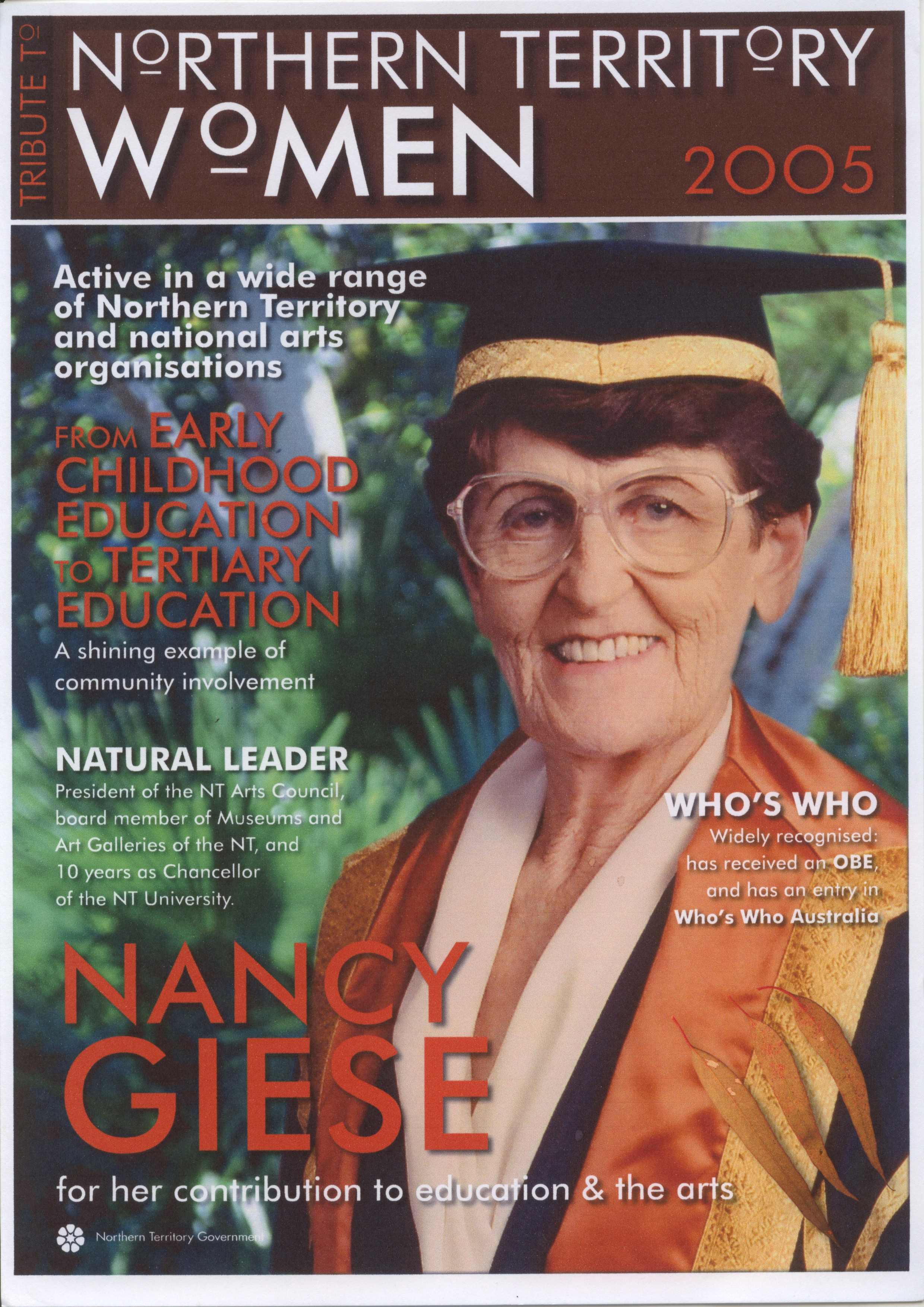 Nancy (Nan) Giese AO OBE Doctor of Education honoris causa Nancy (Nan) Giese AO OBE Doctor of Education honoris causa
|
'...There was no tertiary institution in the Northern Territory in the first two post-War decades, although an Adult Education Centre was established in Darwin in 1958. The Graduates’ Association was laughed to scorn by the Commonwealth government in its attempts to establish a university in the early 1960s. But the lobbying didn’t stop and, by 1968, a planning committee of which I was a member, was formed to plan a post-school institution. The outcome, after four years, was a multi-level, multi-purpose institution, the Darwin Community College, to be followed by the Alice Springs Community College, the Darwin Institute of Technology and the University College of the Northern Territory, culminating in the Northern Territory University, which opened in 1989 and now has 11,500 students. This is the institution that the pundits in Canberra dismissed as recently as 1981 as not being viable. I was heavily involved in all these developments, and what exciting, challenging and rewarding years they have been.
…When I moved to this beautiful part of Australia, I missed most the access I had enjoyed in the south to the performing and visual arts. It didn’t take long to find many other people of like mind—and yes! we formed committees and set goals for ourselves…’
Click here to read the full Opening Address, Women’s Forum on Sex Stereotyping and its Effects on Women’s Health and Career Aspirations, Nancy (Nan) Giese, 1985
See also The Darwin Institute of Technology: a historical perspective, State Reference Library of the Northern Territory, 1990 at the Arafura Research Archive, Charles Darwin University; buy at Adelaide Booksellers
|









 Nancy (Nan) Giese AO OBE Doctor of Education honoris causa
Nancy (Nan) Giese AO OBE Doctor of Education honoris causa 